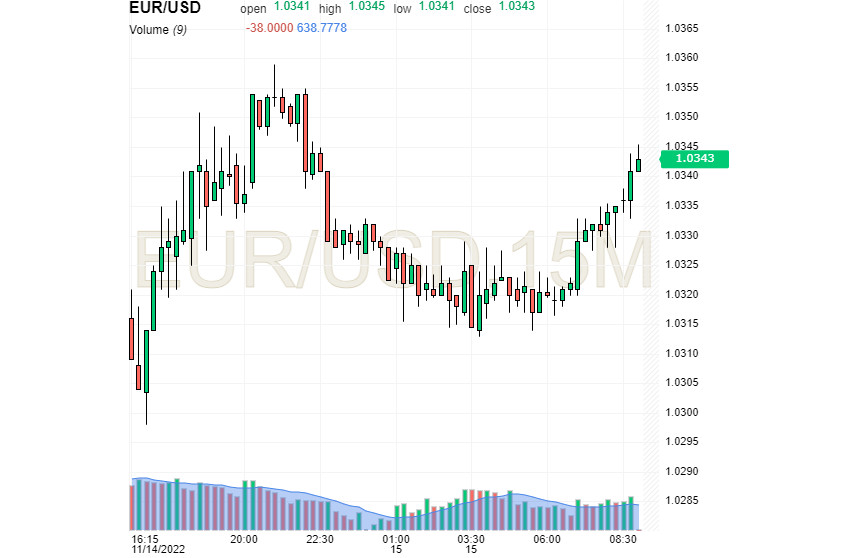
Recently, analysts and market participants have been increasingly saying that the dollar has passed its price peak and will now become cheaper. Expectations of another Federal Reserve rate hike add fuel to the fire. Against this background, the greenback is making a lot of efforts to stay afloat, but it is difficult for it to avoid volatility.
The greenback continued to recover at the beginning of the new week amid statements by the Fed about further rate hikes. The steady growth of the dollar was accompanied by another subsidence of the euro, which just recently celebrated a victory. At the same time, for several weeks, the monetary authorities of the eurozone signaled their readiness to maintain high rates of raising interest rates. Against this background, long positions on the euro increased significantly, but later this trend came to naught. Nevertheless, at the beginning of this week, the euro strengthened, having received a "boost" from positive macro data on the eurozone economy. According to current reports, in September, industrial production in the eurobloc countries grew by 0.9% m/m and by 4.9% - y/y.
And so the dollar fell but did not lose its presence of mind. However, there are more and more statements in the markets claiming that the dollar has already passed its peak and will just fall. At the same time, many analysts do not rule out a fall in the greenback in the short term, as markets reduce long positions on it. In the past two weeks, pressure on the dollar has intensified as traders and investors fear that the Fed will slow down the pace of monetary policy tightening and take a pause in raising rates. At the same time, representatives of the Fed do not exclude such a scenario.
As a result, at the beginning of the week, the market was flooded with a wave of demand for risky assets, provoking a short-term sell-off of USD. This was also supported by disappointing October data on the consumer price index (CPI) in the US. After a rally in risky assets, recorded at the end of last week, the greenback suffered significant losses against other currencies, primarily the European one. As a result, after an impressive rally, the EUR/USD pair fell into a bearish trap, from which it was difficult to get out. According to technical analysis, in the near term, the pair will retain room for decline in order to correct from overbought levels. On Tuesday morning, November 15, the EUR/USD pair continued its recovery, trading near 1.0343.

Currently, the US currency is receiving support amid the market's expectation of an increase in the Fed's interest rate. The given sentiments have strengthened after Christopher Waller, the central bank's spokesman, announced the possibility of a further increase in the rate, despite the positive reports on consumer prices in the US. According to Waller, "the markets were far ahead of events", reacting violently to the inflation report. According to a Fed spokesman, the annual CPI index of 7.7% is quite impressive, so the Fed "has a long way to go" to normalize the inflation rate. Against this backdrop, the US currency was steadily growing, holding its positions. At the same time, for several months, market participants prefer longs in USD, and this contributes to the growth of the latter.
At the moment, most analysts predict an increase in the rate by 0.5 percentage points, to 4.25-4.5% per annum at the December meeting. Earlier, the Fed noted that the central bank needs serious reasons to change the current monetary policy. However, now they are no longer there, experts believe, so the Fed has thrown all its efforts into the fight against inflation. Analysts say there is currently very little incentive to cut prices, especially in the US service sector. In this situation, inflation will remain high in the first half of 2023, according to Wells Fargo economists. At the same time, Wells Fargo expects the greenback to remain strong in the medium term, and in the second half of 2023 it will begin to decline.
This coincides with the forecasts of Bloomberg agency analysts, who are certain that the dollar will fall further. With a high degree of probability, in 2023, the US currency will continue to depreciate, according to the agency. At the same time, analysts fear a stronger trend towards a further weakening of the greenback amid galloping inflation and an aggressive increase in Fed rates. According to experts from the reputable bank Goldman Sachs, inflation in the US will slow down significantly next year.
Goldman Sachs claims that such factors as the strengthening dollar and cheaper energy resources will lead to lower prices. At the same time, the main indicator of inflation in the United States (the price index for personal consumption expenditures, PCE) will fall to 2.9% by the end of 2023. Currently, this figure is 5.1%. According to economists at Goldman Sachs, the recovery of supply chains, the approaching peak of real estate appreciation and the slowdown in wage growth are positively affecting the dynamics of prices in the United States. In addition, a significant impact on inflation in the United States has a reduction in the cost of energy resources and the strengthening of the USD.
 English
English 
 Русский
Русский Bahasa Indonesia
Bahasa Indonesia Bahasa Malay
Bahasa Malay ไทย
ไทย Español
Español Deutsch
Deutsch Български
Български Français
Français Tiếng Việt
Tiếng Việt 中文
中文 বাংলা
বাংলা हिन्दी
हिन्दी Čeština
Čeština Українська
Українська Română
Română

